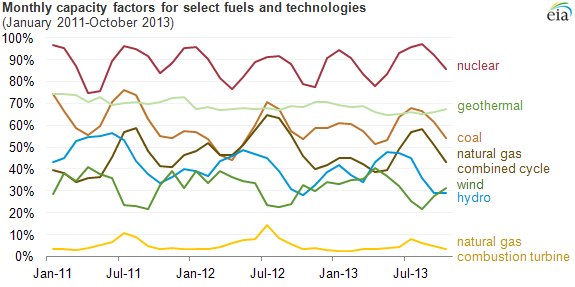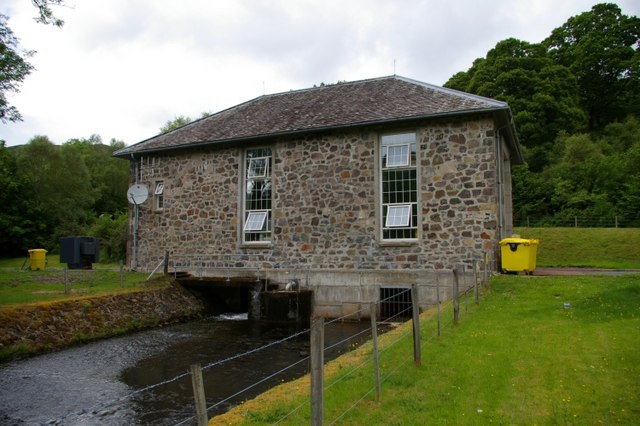|
River Morar
The River Morar is a river that flows from Loch Morar in the west Highlands of Scotland. It flows from the western end of the loch to the estuary of Morar Bay, an inlet of the Sound of Sleat. It is one of Scotland's shortest rivers, and is known for its white sands beaches where it flows through Morar Bay. The river is crossed by three bridges, and is the site of a hydro-electric power station, built as part of the first constructional scheme promoted by the newly formed North of Scotland Hydro-Electric Board, to demonstrate its commitment to supplying the remote areas of Scotland with electricity. It was commissioned in 1948. Course The course of the River Morar is about long from Loch Morar to below the bridge carrying the A830 road, A830 trunk road, and is one of the shortest rivers in Scotland. However, when the tide is out, it flows in a single channel across the sands of Morar Bay, for another , and this section is labelled River Morar by the Ordnance Survey.Ordnance S ... [...More Info...] [...Related Items...] OR: [Wikipedia] [Google] [Baidu] |
Loch Morar
Loch Morar () is a freshwater loch in the Rough Bounds of Lochaber, Highland (council area), Highland, Scotland. It is the fifth-largest loch by surface area in Scotland, at , and the deepest freshwater body in the British Isles with a maximum depth of . The loch was created by glacial action around 10,000 years ago, and has a surface elevation of above sea level. It separates the traditional district of North Morar (which contains the village of Morar), from Arisaig and Moidart. Geography Loch Morar is long, has a surface area of , and is the deepest freshwater body in the British Isles with a maximum depth of . In 1910, John Murray and Laurence Pullar found it to have a mean depth of and a total volume of during their survey of Scottish lochs. The bottom is deepened below the United Kingdom Continental Shelf, and until 1943, when a depth of was observed in the Inner Sound, Scotland, Inner Sound, it was believed to be the deepest water in the United Kingdom. The surface o ... [...More Info...] [...Related Items...] OR: [Wikipedia] [Google] [Baidu] |
David Ogilvy, 12th Earl Of Airlie
Colonel David Lyulph Gore Wolseley Ogilvy, 12th Earl of Airlie, (18 July 189328 December 1968) was a Scottish peer, soldier and courtier. He was the father-in-law of Princess Alexandra, The Honourable Lady Ogilvy. Early life Airlie was born on 18 July 1893 in Cahir, County Tipperary, Ireland. He was the eldest son of David Ogilvy, 11th Earl of Airlie, and his wife, the former Lady Mabell Gore. He inherited his father's titles in 1900 at the age of six when his father died in the Boer War, and was one of the trainbearers to Mary of Teck at her coronation in 1911. Lord Airlie was educated at Eton and Royal Military Academy Sandhurst. Career He became a Scottish representative peer in 1922, was appointed a lord-in-waiting in Stanley Baldwin's government in April 1926, and was made a Knight Commander of the Royal Victorian Order on 10 May 1929. In June 1936, he became Lord Lieutenant of Angus. He was a guest at the 1947 wedding of Princess Elizabeth and Philip Mountb ... [...More Info...] [...Related Items...] OR: [Wikipedia] [Google] [Baidu] |
Capacity Factor
The net capacity factor is the unitless ratio of actual electrical energy output over a given period of time to the theoretical maximum electrical energy output over that period. The theoretical maximum energy output of a given installation is defined as that due to its continuous operation at full nameplate capacity over the relevant period. The capacity factor can be calculated for any electricity producing installation, such as a fuel consuming power plant or one using renewable energy, such as wind, the sun or hydro-electric installations. The average capacity factor can also be defined for any class of such installations, and can be used to compare different types of electricity production. The actual energy output during that period and the capacity factor vary greatly depending on a range of factors. The capacity factor can never exceed the availability factor, or uptime during the period. Uptime can be reduced due to, for example, reliability issues and maintenance, schedul ... [...More Info...] [...Related Items...] OR: [Wikipedia] [Google] [Baidu] |
Renewables Obligation (United Kingdom)
The Renewables Obligation (RO) is a market support mechanism designed to encourage generation of electricity from eligible Renewable energy in the United Kingdom, renewable sources in the United Kingdom. There are three related schemes for the three Law of the United Kingdom#Legal jurisdictions, legal jurisdictions of the UK. In April 2002 the Renewables Obligation was introduced in England and Wales, and in Scotland as the Renewables Obligation (Scotland). The RO was introduced in Northern Ireland in April 2005. In all cases, the RO replaced the Non-Fossil Fuel Obligation which operated from 1990. The RO placed an obligation on licensed electricity suppliers in the United Kingdom to source an increasing proportion of electricity from renewable sources, similar to a renewable portfolio standard. This figure was initially set at 3% for the period 2002/03, and in 2010/11 it was 11.1% (4.0% in Northern Ireland). By 2020 it was almost half of all electricity in England, Wales and Scot ... [...More Info...] [...Related Items...] OR: [Wikipedia] [Google] [Baidu] |
Scottish Gaelic
Scottish Gaelic (, ; Endonym and exonym, endonym: ), also known as Scots Gaelic or simply Gaelic, is a Celtic language native to the Gaels of Scotland. As a member of the Goidelic language, Goidelic branch of Celtic, Scottish Gaelic, alongside both Irish language, Irish and Manx language, Manx, developed out of Old Irish. It became a distinct spoken language sometime in the 13th century in the Middle Irish period, although a Classical Gaelic, common literary language was shared by the Gaels of both Ireland and Scotland until well into the 17th century. Most of modern Scotland was once Gaelic-speaking, as evidenced especially by Gaelic-language place names. In the 2011 United Kingdom census#2011 Census for Scotland, 2011 census of Scotland, 57,375 people (1.1% of the Scottish population, three years and older) reported being able to speak Gaelic, 1,275 fewer than in 2001. The highest percentages of Gaelic speakers were in the Outer Hebrides. Nevertheless, there is a language ... [...More Info...] [...Related Items...] OR: [Wikipedia] [Google] [Baidu] |
Reginald Fairlie
Reginald Francis Joseph Fairlie LLD (7 March 1883 – 27 October 1952) was a Scottish architect. He served as a commissioner of RCAHMS and on the Ancient Monuments Board for Scotland. Life see Born at Kincaple, Fife, he was the son of J. Ogilvy Fairlie of Myres Castle, Myres (1848–1916) and Jane Mary Fairlie. He was educated at the Oratory School in Birmingham. > He was apprenticed to Robert Lorimer in 1901, and much of his style echoes that of Lorimer. Ian Gordon Lindsay trained under him (1927–30). A faithful Roman Catholic, Fairlie designed many war memorials, churches and restorations of castles. From a long list of commissions, only a handful fall outside the borders of Scotland. He set up office at 14 Randolph Place in 1908. He served in Royal Engineers in World War I. His older brother John Ogilvy Fairlie was killed in action on 25 September 1915. With the death of his father on 28 September 1916, Reginald fell heir to the family estate of Myres. In the early 192 ... [...More Info...] [...Related Items...] OR: [Wikipedia] [Google] [Baidu] |
James Shearer
James Shearer (1881–1962) was a Scottish architect, active in the early and middle twentieth century. He was based in Dunfermline, but worked on projects covering much of Scotland. He is particularly noted for his work for The Scottish Youth Hostel Association, now called Hostelling Scotland, the Carnegie United Kingdom Trust, which was also based in Dunfermline, and the North of Scotland Hydro-Electric Board. Early life James Grant Shearer was the son of James Shearer, a manufacturer of linen and a designer of damask patterns, and his first wife Agnes Donaldson Smith. The family had settled in Dunfermline prior to 1854, after his grandfather, another James, had moved there from Craigellachie, Moray, Craigellachie, Banffshire. The younger James was born at Morton Lodge, Dunfermline on 6 April 1881, and later attended Dunfermline High School, before beginning an apprenticeship with Thomas Hislop Ure in September 1897. In November 1901, he obtained a job as an assistant at John Bur ... [...More Info...] [...Related Items...] OR: [Wikipedia] [Google] [Baidu] |
Loch Morar Hydro Station - Geograph
''Loch'' ( ) is a word meaning "lake" or " sea inlet" in Scottish and Irish Gaelic, subsequently borrowed into English. In Irish contexts, it often appears in the anglicized form "lough". A small loch is sometimes called a lochan. Lochs which connect to the sea may be called "sea lochs" or "sea loughs". Background This name for a body of water is Insular CelticThe current form has currency in the following languages: Scottish Gaelic, Irish, Manx, and has been borrowed into Lowland Scots, Scottish English, Irish English and Standard English. in origin and is applied to most lakes in Scotland and to many sea inlets in the west and north of Scotland. Many of the loughs in Northern England have also previously been called "meres" (a Northern English dialect word for "lake", and an archaic Standard English word meaning "a lake that is broad in relation to its depth"), similar to the Dutch , such as the ''Black Lough'' in Northumberland. Some lochs in Southern Scotland h ... [...More Info...] [...Related Items...] OR: [Wikipedia] [Google] [Baidu] |
Loch Ailort
Loch Ailort ( ; Scottish Gaelic: Loch Ailleart) is a sea loch in Morar, Lochaber, Highland, Scotland. Loch Ailort is a shallow, V-shaped loch, with the small Ardnish Peninsula on the north side, and the large, southwest-facing Moidart Peninsula to the south. Ailort, Loch Loch Ailort is bounded in the northeast by the settlement of the same name, Lochailort and in the west, opening out into the Sound of Arisaig. To the north of the loch lies Loch nan Uamh. Geography The northern coastline is overlooked by the hill Cruach an Aonaich, tha ...[...More Info...] [...Related Items...] OR: [Wikipedia] [Google] [Baidu] |
Mallaig
Mallaig (; ) is a seaport, port in Morar, on the west coast of the Scottish Highlands, Highlands of Scotland. It faces Skye from across the Sound of Sleat. The Mallaig railway station, local railway station is the terminus of the West Highland Line (Fort William and Mallaig branch), and the town is linked to Fort William, Highland, Fort William by the A830 road – the "Road to the Isles". Development The village of Mallaig was founded in the 1840s when Thomas Fraser, 12th Lord Lovat, Lord Lovat, owner of North Morar Estate, divided up the farm of Mallaigvaig into 17 parcels of land and encouraged his tenants to move to the western part of the peninsula and turn to fishing as a way of life. The population and local economy expanded rapidly in the 20th century with the arrival of the railway. ferry, Ferries operated by Caledonian MacBrayne and Western Isles Cruises sail from the port to Armadale, Skye, Armadale on the Isle of Skye, Inverie in Knoydart, Lochboisdale on South Ui ... [...More Info...] [...Related Items...] OR: [Wikipedia] [Google] [Baidu] |
Nostie
Nostie () is a small remote hamlet, lying on Nostie Bay, an inlet at the northeastern end of the sea loch, Loch Alsh in the Scottish Highlands and is in the council area of Highland. Nostie lies a short distance from one of Scotland's popular tourist attractions, Eilean Donan Castle. Notable residents It is the home of the well known young Scottish harpist, Murdo Macrae. He was born there, the second son of Farquar Macrae, a hill farmer and Susie Macrae, a dentist, both of whom were musical. He began to play the piano when he was five, and discovered the harp at Plockton primary school when he was nine. After finishing his schooling at Sleat on the Isle of Skye and at Plockton High School, he went to the City of Edinburgh Music School, and subsequently began a post graduate course at Brooklyn College in New York. Nostie was also the home village of the late Reverend Kenneth MacLeod. Hydro-electricity The politician Tom Johnston during his time as Secretary of State for Scotla ... [...More Info...] [...Related Items...] OR: [Wikipedia] [Google] [Baidu] |
Loch Sloy Hydro-Electric Scheme
The Loch Sloy Hydro-Electric Scheme is a hydro-electric facility situated between Loch Sloy and Inveruglas on the west bank of Loch Lomond in Scotland. It is also within the Arrochar Alps. History Loch Sloy is a relatively small loch located to the west of Loch Lomond and around above it. The engineer Edward MacColl was asked to look at the possibility of using it for a hydro-electric sceme in 1936, while working for the Central Electricity Board. However, rather than a conventional arrangement, he considered that it was suitable for a huge pumped-storage scheme, which would have been much larger than any of the existing schemes in Scotland. He called it a "reversible hydraulic station", which would pump water from Loch Lomond to Loch Sloy during the night, and use the water to generate electricity at times when the demand was highest. He envisaged eight turbines, with a total capacity of 360 MW. The site was visited by the Board's Technical Development Committee in 1 ... [...More Info...] [...Related Items...] OR: [Wikipedia] [Google] [Baidu] |








